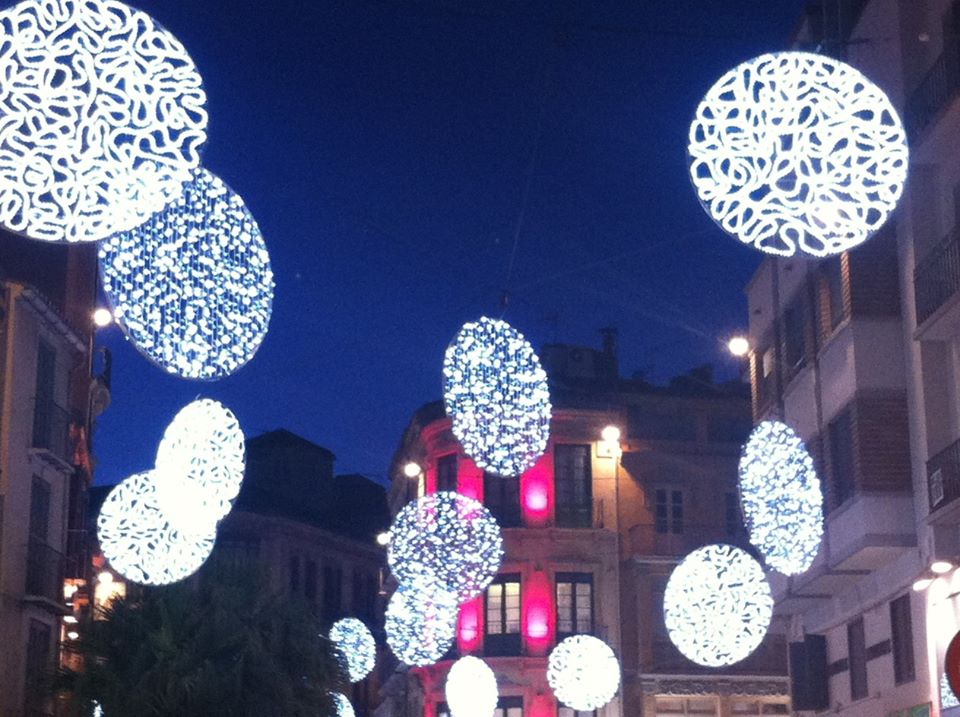 There's never enough time in December. It's as though the whole month is given over to preparing for Christmas, cooking for Christmas, shopping for Christmas, pre-Christmas gatherings, visiting Christmas lights, visiting Christmas nativity scenes, and generally focussing around Christmas.
There's never enough time in December. It's as though the whole month is given over to preparing for Christmas, cooking for Christmas, shopping for Christmas, pre-Christmas gatherings, visiting Christmas lights, visiting Christmas nativity scenes, and generally focussing around Christmas.
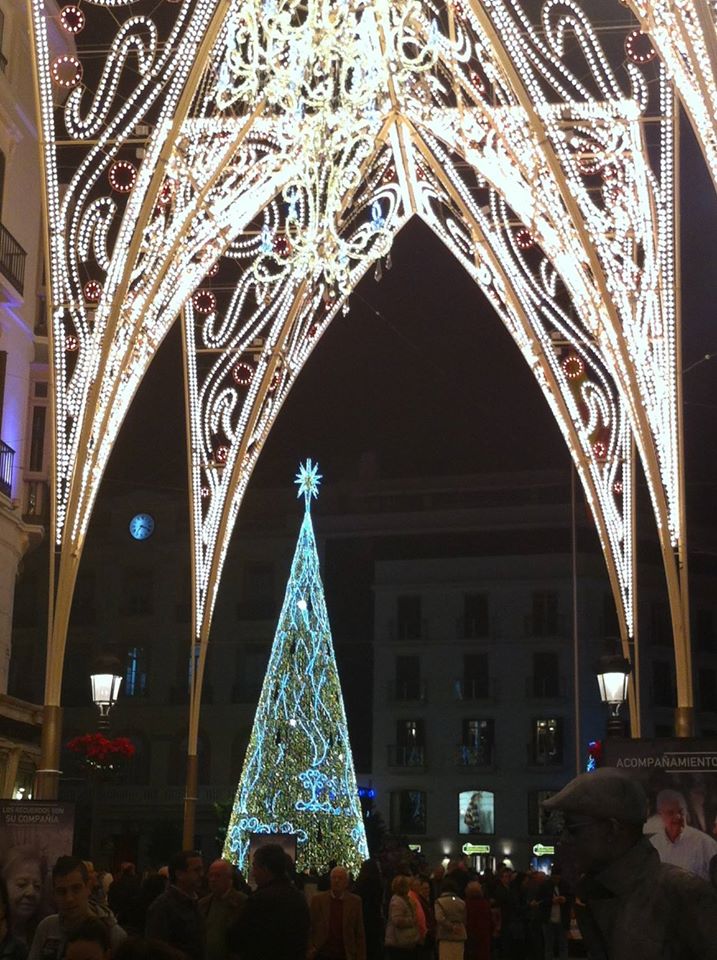 As in previous years, touring the belenes (nativity scenes) and Málaga's Christmas lights takes more than one trip. Although the lights in Calle Larios and la Plaza de la Constitución are always spectacular, we were especially lucky this year to have the incredible "cathedral"-style display, direct from Puente Genil (a town in the province of Córdoba whose lights always punch well above their weight due to the fact that Spain's leading manufacturer of display lighting, los Hermanos Ximenez, is a local family firm). This display had been designed for their home town earlier in the year, where it was especially grand as it celebrated the 125th anniversary of Puente Genil being Spain's first town to have electric lighting.
As in previous years, touring the belenes (nativity scenes) and Málaga's Christmas lights takes more than one trip. Although the lights in Calle Larios and la Plaza de la Constitución are always spectacular, we were especially lucky this year to have the incredible "cathedral"-style display, direct from Puente Genil (a town in the province of Córdoba whose lights always punch well above their weight due to the fact that Spain's leading manufacturer of display lighting, los Hermanos Ximenez, is a local family firm). This display had been designed for their home town earlier in the year, where it was especially grand as it celebrated the 125th anniversary of Puente Genil being Spain's first town to have electric lighting.
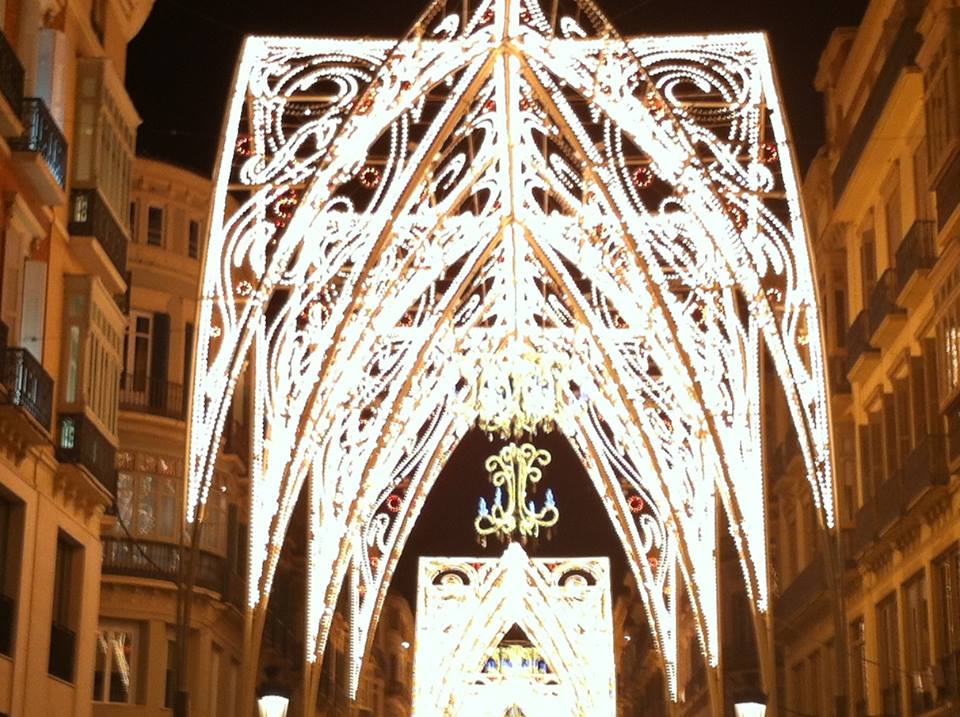 And here it was in Málaga, an extraordinary tunnel of lights reaching down Calle Larios, even more beautiful than ever. The street packed with visitors marvelling at the display. Shops and restaurants full, the crisis temporarily set aside.
And here it was in Málaga, an extraordinary tunnel of lights reaching down Calle Larios, even more beautiful than ever. The street packed with visitors marvelling at the display. Shops and restaurants full, the crisis temporarily set aside.
Then over that long holiday weekend between December 6th (el Día de la Constitución) and December 8th (el Día de la Inmaculada Concepción de Maria), in Spanish homes the tree is put up and decorated, and in the villages, towns and cities 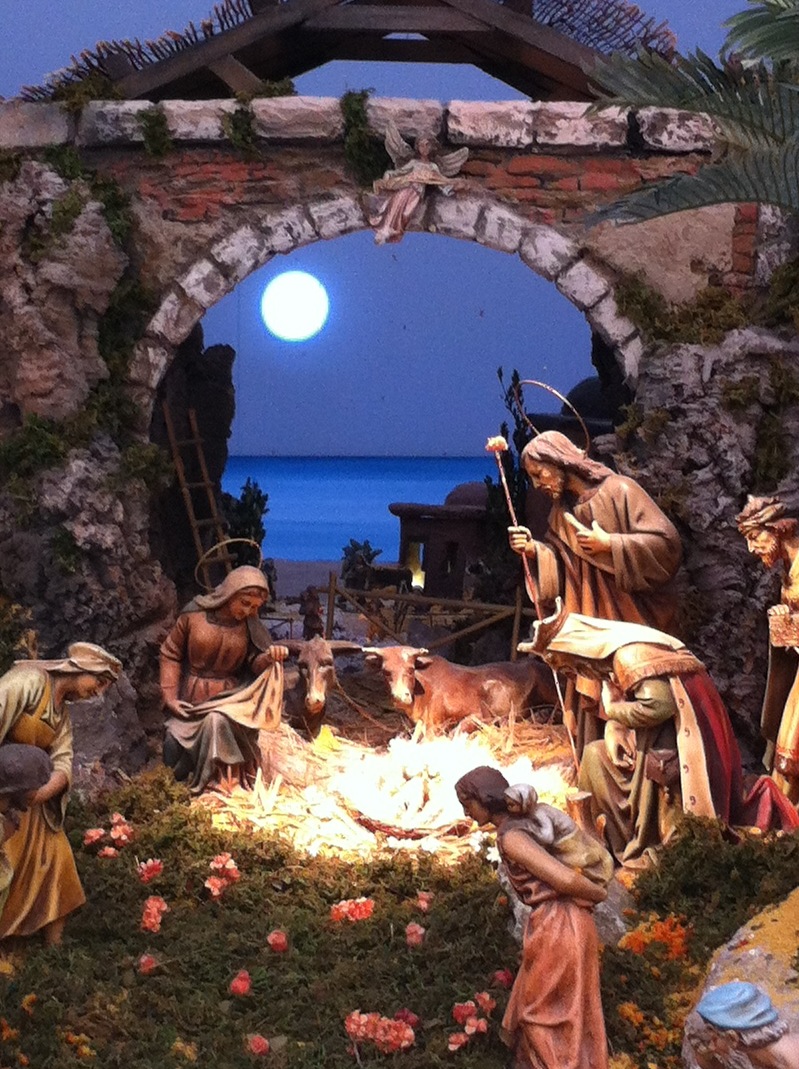 the nativity scenes appear. Not individual little crib scenes, although these of course appear in the windows of houses. No, these belenes are huge great things, many metres long, representing the entire story of the birth of Christ, from the arrival of the Angel Gabriel to tell Mary of her pregnancy, through the journey on a donkey to Bethlehem, the shepherds, the birth, and the Wise Men. Sometimes an entire miniature village is built, often with running water, sun and moon coming out alternately, moving parts, changing lighting - it presents itself as very humble but personally I suspect there is a healthy degree of competitiveness in the building of the belén!
the nativity scenes appear. Not individual little crib scenes, although these of course appear in the windows of houses. No, these belenes are huge great things, many metres long, representing the entire story of the birth of Christ, from the arrival of the Angel Gabriel to tell Mary of her pregnancy, through the journey on a donkey to Bethlehem, the shepherds, the birth, and the Wise Men. Sometimes an entire miniature village is built, often with running water, sun and moon coming out alternately, moving parts, changing lighting - it presents itself as very humble but personally I suspect there is a healthy degree of competitiveness in the building of the belén!
Safe winners every year (if there WERE a competition!), hands down, would be El Belén del Barrio de La Mosca. This little community in north-east Málaga created their first belén 23 years ago as part of a protest about a dangerous rock-face above their properties (see Bob Manning's blog for the full story) and it has grown ever since, each household contributing a part, and has become a traditional 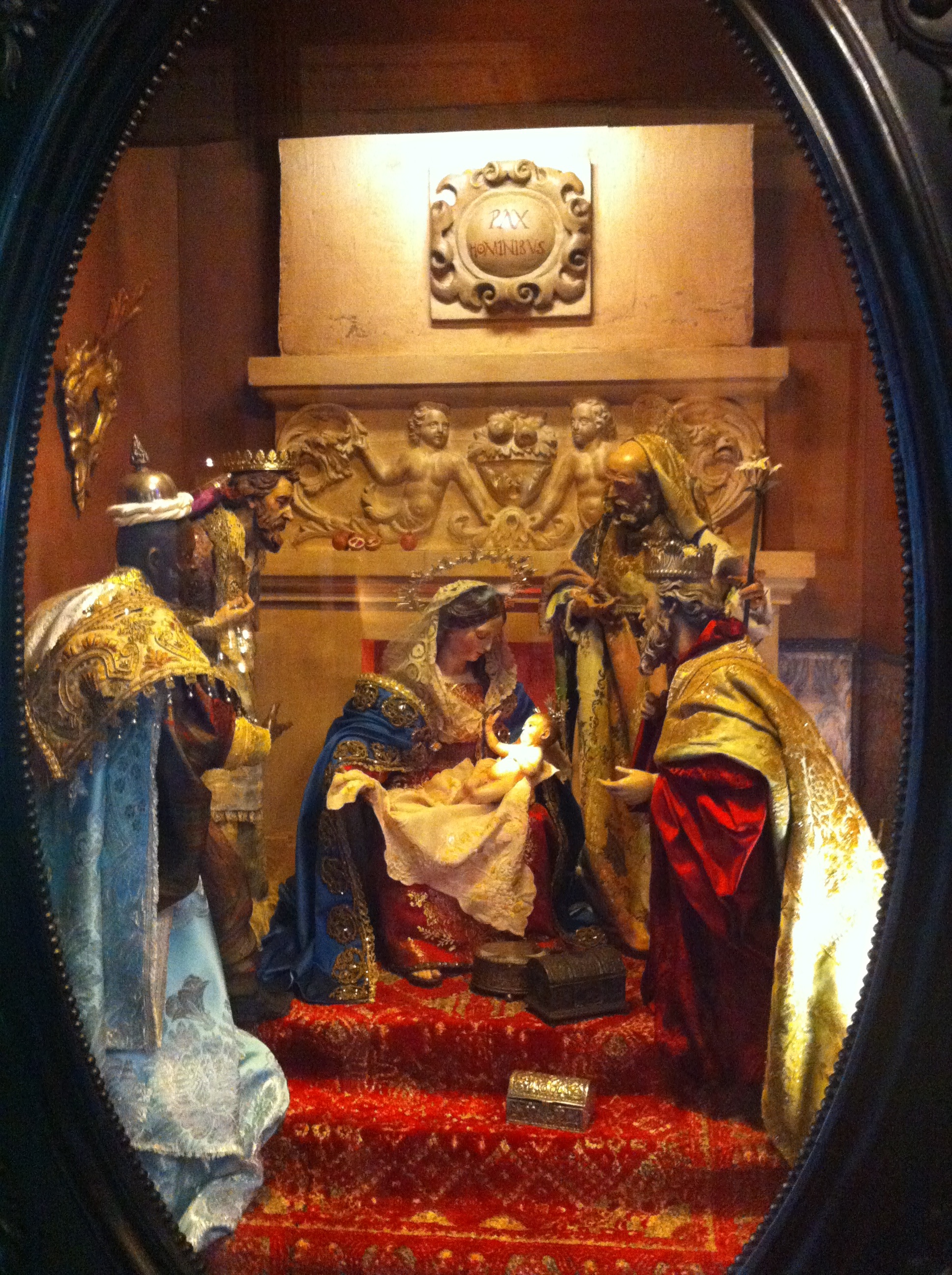 visit for many Malagueñan families every year. Find it in Calle Escritor Manuel Solano.
visit for many Malagueñan families every year. Find it in Calle Escritor Manuel Solano.
Apart from La Mosca and the big municipal belén in Málaga's town hall (ayuntamiento), my two favourites this year were a beautiful baroque belén in Cafetería La Puerta Oscura in Calle Molina Larios #5, and the belén made up of over 100 delicate old Lladró porcelain pieces in El Museo de Vidrio y Cristal.
December brought an extra excitement to Colmenar this year, with the arrival of TV cameras 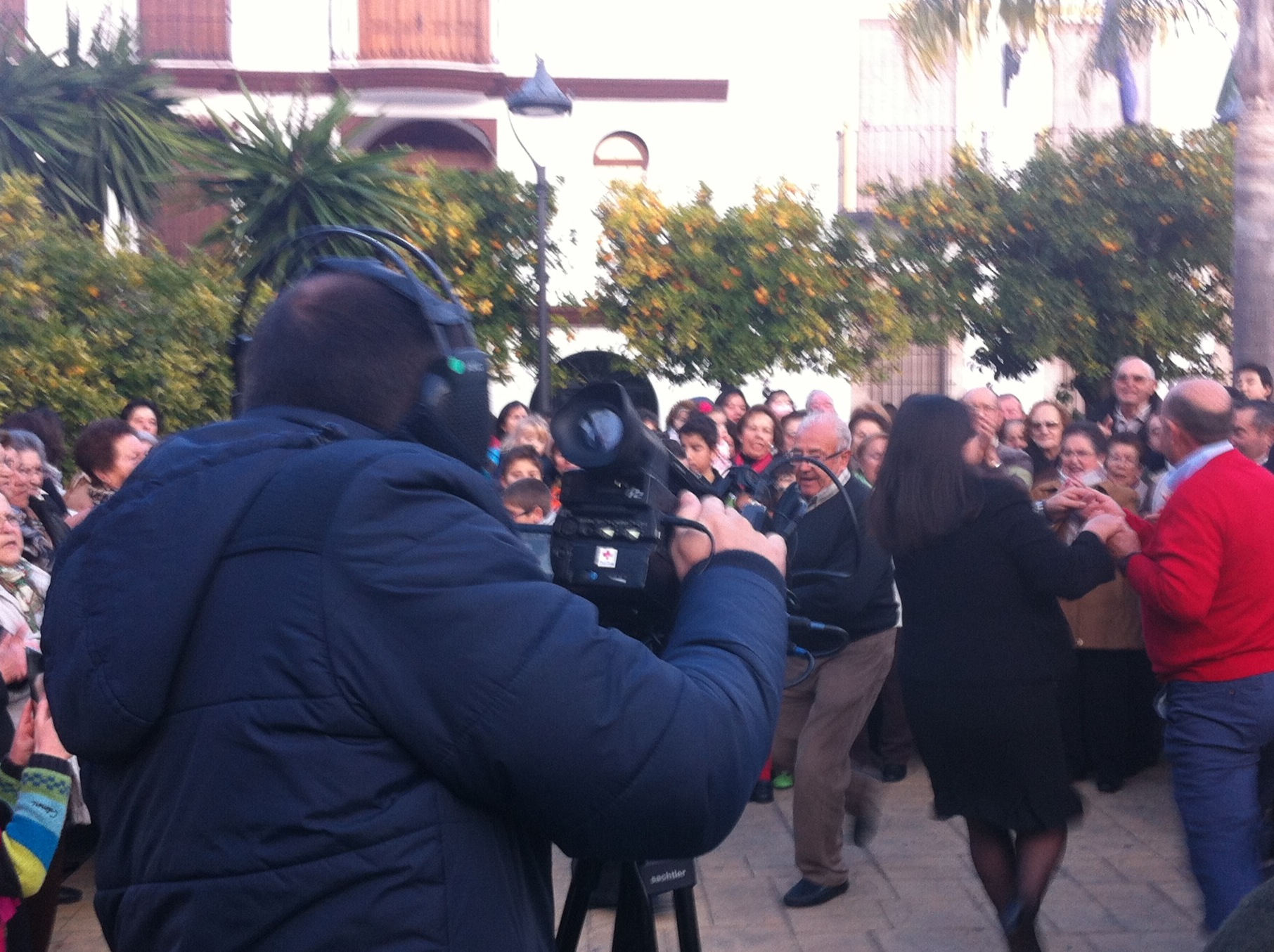 from Canal Sur, and the famous presenter Rafael Cremades for two days filming for "Este es Mi Pueblo" (This is My Town), to be broadcast across Andalucía on December 28th. They filmed in the flamenco club, in a few private houses, in the streets, in the honey museum, and of course in the plaza outside the town hall. For the finale of the show, the townspeople gathered in the square to sing traditional songs and to dance for the cameras, children hitting tambourines and elders hitting zambombas.
from Canal Sur, and the famous presenter Rafael Cremades for two days filming for "Este es Mi Pueblo" (This is My Town), to be broadcast across Andalucía on December 28th. They filmed in the flamenco club, in a few private houses, in the streets, in the honey museum, and of course in the plaza outside the town hall. For the finale of the show, the townspeople gathered in the square to sing traditional songs and to dance for the cameras, children hitting tambourines and elders hitting zambombas.
The two little girls next door knocked to ask me politely when Santa would appear climbing his rope up to my balcony. Not for another week, I told them, trying to remember where I had stored him after last year. Before that, my top priority is to give in and buy that most Spanish of items, a brasero (a small circular fire, now usually electric though many households still use the traditional charcoal-burner, that sits under the dining table, all gaps blocked by an enormous chenille tablecloth that reaches the ground). I have sat many a time at my neighbour's kitchen table, legs cosy tucked beneath the heavy tablecloth, but I must admit I have always considered them somewhat dangerous. But needs must, and if the dining table is to be used at all over Christmas then a brasero is needed.
If no blog post appears next week, send the Fire Brigade!
© Tamara Essex 2014 http://www.twocampos.com
THIS WEEK'S LANGUAGE POINT:
Through chatting in Spanish on Facebook I've been picking up more of the written shortcuts that are used, such as xk or xq for "por qué?" or "porque" (why?" and "because"), and xo for "pero" (but). xo needs to be used carefully, because x o x o means "besos y 'brazos" or hugs & kisses. xa means "para" (for) and not surprisingly pf means "por favor".
"Es que" (It's that ....") gets abbreviated and run together to become "Esk".
So I'm getting to grips with reading Facebook posts along the lines of "Buenas, chic@s! Esk me voy xa ver laluz, no? Vengaaa xk es una pura maravilla xo no el viernes x la tarde pf x o x o"